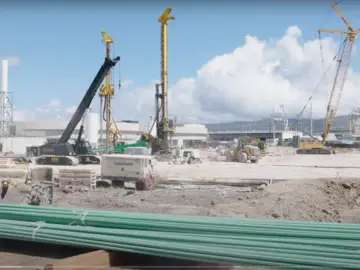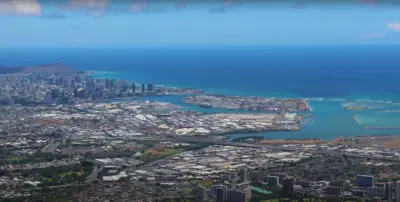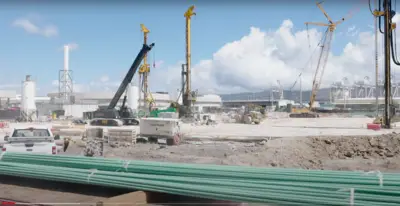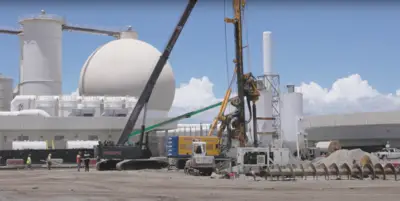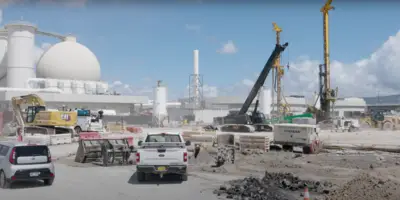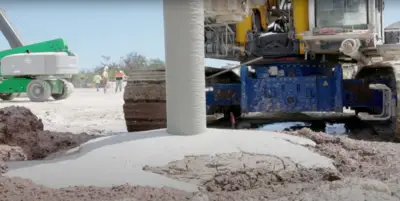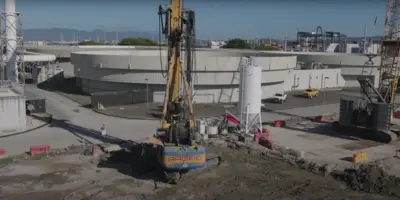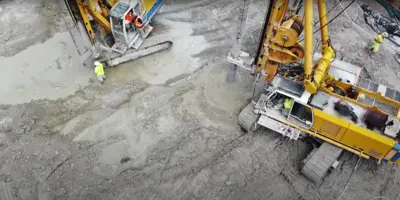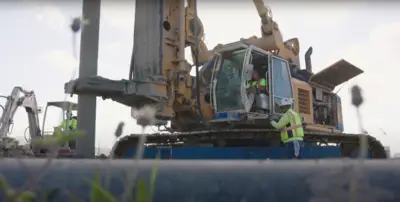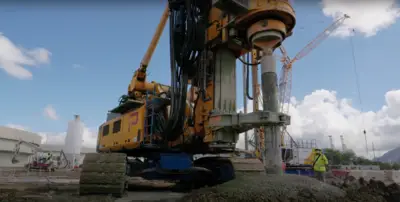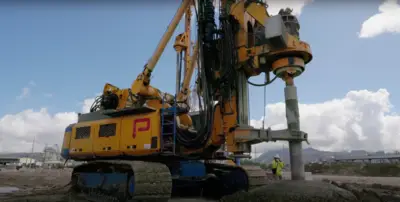It's all in the Mix – BAUER BG 33 H and BG 40 working in Hawaii
The "Sand Island Cement Mixing Project" - Engineering expertise from Schrobenhausen impresses on the other side of the world
With around 82 million gallons of recycled water per day (equivalent to around 310 million liters), the Sand Island Wastewater Treatment Plant is the largest of its kind in the US state of Hawaii. Commissioned in 1978, the plant supplies the entire Honolulu metropolitan area from Kuliouou Valley in the east to Aliamanu in the west with recycled water. In order to meet the increased requirements, the capacity of the treatment plant was to be increased from 82 to 90 million gallons. As part of the extensive construction work, various modernizations were also to be carried out in order to ensure a chemically improved reprocessing process, among other things.
One sub-project of the construction measures, the "Sand Island Cement Mixing Project", aimed to create a robust soil seal by injecting a special cement mixture at a depth of more than 6 meters below sea level to reliably separate the purified water from the environment. This is intended to prevent the risk of contamination and maintain the ecological balance.
The specialist foundation engineering company Pacific Foundation used its two BAUER BGs, a BG 33 and a BG 40, to carry out large-scale ground improvement using the Single Column Mixing (SCM) method and to inject a special high-quality cement mixture into the ground. First, the ground was pre-drilled with auger drills, something that is not usual in the SCM process, but is due to the hard and difficult ground conditions. Only then could the soil be mixed with mixing paddles and simultaneously injected with the respective binding agent.
Keyword ground conditions: As these posed an immense challenge, thorough geotechnical investigations first had to be carried out in order to analyse the ground at a granular level and determine the optimum cement mix. The diverse composition of the ground - including different layers of sandstone and coral - presented the Pacific Foundation team with complex problems. This was followed by a careful test phase in which soil samples from the individual layers were taken and analyzed.
After determining the right cement mixture made from high-quality and environmentally friendly materials, it was finally time for implementation. Today, the cement layer placed in the ground forms a reliable barrier to contain the treated wastewater within the designated area in the long term. We congratulate Pacific Foundation on their great success!
